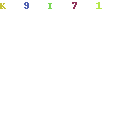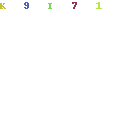On the day Maharashtra crossed 500,000 Covid-19 cases, Mumbai recorded 1,304 fresh infections – highest 24-hour spike in August so far. The city on average has reported around 900 cases in the first eight days of this month, down from 1,133 in July. The Brihanmumbai Municipal Corporation (BMC), however, is still in a ‘wait-and-watch’ mode, as the government has been lifting restrictions as part of its Mission Begin Again.
“Saturday has more cases in comparison to other days in August, but if we compare today’s [Saturday] situation to earlier days when Mumbai got similar number of cases [1,300-1,400], we were conducting 5,000 or 6,000 Covid-19 tests a day. Now we are conducting 9,000 to 10,000 tests a day. So Saturday’s number cannot be termed as a spike,” said Suresh Kakani, additional municipal commissioner in-charge of the health department in BMC.
Kakani, however, sounded a word of caution too. “We are preparing and are equipped to handle cases shooting up to 2,000 or more, too. As Mumbai opens up, the cases may increase. Even when you go out on the road, you see a lot of traffic these days, mobility is high, people-to-people interaction is high and it will further increase. We are ready for a possible spike,” he said.
Mumbai on Saturday reported 58 fatalities, taking the city’s toll up to 6,751. The city’s fatalities are 38.87% of Maharashtra’s Covid-19 toll as on Saturday. This is a significant drop from more than 60% in March and April.
While there are 19,914 active cases in the city that translate into 13.54% of Maharashtra’s active cases, Mumbai’s recovery rate is 77%, growth rate 0.78%, and doubling rate is 89 days.
The city’s case fatality rate (CFR) stands at 5.5%, higher than Maharashtra’s 3.45%. Reducing number of deaths remains a challenge. The rate, however, has reduced from 5.8% and 5.9% in June and the beginning of July.
The turnaround
Since the first two weeks of July, when the average number of daily cases in the city stood at 1,300, to the first week of August, the city has witnessed a significant dip in the number of cases per day, with a few exceptions.
The dip is despite Mumbai liberalising its testing on July 7, allowing any person to approach a laboratory and get tested for Covid-19 without a doctor’s prescription. BMC expected Covid-19 cases to increase after this, but that did not happen. As of August 7, Mumbai has conducted 592,230 tests, with a positivity rate of 20.44%.
The strategy
When BMC commissioner Iqbal Singh Chahal on June 22 launched ‘Mission Zero’ – drawn up based on the success of models implemented in slums such as Dharavi, Mankhurd, and the settlement of Worli Koliwada – to reduce surge of cases in high-rise buildings in the western suburbs, he attributed the success of these models to the 4T formula – testing, tracing, tracking of high-risk contacts and treating patients.
BMC used mobile ambulances that went door-to-door to screen patients. Watertight containment zones and institutional quarantining of many high-risk contacts to break their interaction with the community, and stop further spread of the virus, also helped, Chahal had said.
Road ahead
As Covid-19 cases moved from slums to high-rises after the government lifted lockdown restrictions on June 5, BMC had launched the 35-day ‘Mission Zero’ plan. The civic body, however, now plans to extend the plan indefinitely.
R-Central ward (Borivli West) has the highest growth rate of 1.37%, with a doubling rate of 51. Other suburban wards – R-South (Kandivli), R-North (Borivli), P-South (Goregaon) and T (Mulund) – have a growth rate of 0.9%, above the city’s average. Similarly, D ward (Malabar Hill, parts of Pedder Road, Mahalaxmi and Girgaum) has a growth rate of 1.3%, and a doubling rate of 59 days. “Cases in the suburbs are fluctuating, so there are some days where number of cases is low, and some days where they shoot up. So we have decided to continue with Mission Zero,” said Vishawas Shankarwar, deputy municipal commissioner in-charge of Borivli, Kandivli, Dahisar, and parts of Goregaon.
Kakani said BMC has noticed that whatever strategies they have been using are working, whether it is ‘Chase the Virus’ or ‘Mission Zero’. “But we can’t be complacent because of the trend in cases and are alert,” he said.
BMC is also focusing on reducing the number of deaths. “Our aim is to reduce the number of deaths. We have managed to bring down fatality due to ‘Mission Save Lives’, but we need to focus on it even more,” said Kakani. ‘Mission Save Lives’, a nine-point strategy to reduce fatalities includes video surveillance of each patient, mandatory audit of every death and giving bedpans to serious patients. It was launched on June 30. “The situation has improved, and cases are not increasing at an alarming pace as we saw earlier. But we will know if we are really in control of the situation when the lockdown eases substantially. Mumbai needs to bring down its fatalities,” said Brinelle D’Souza co-convener of Jan Swasthya Abhiyan, Mumbai.
Source: https://www.hindustantimes.com/mumbai-news/mumbai-wins-covid-fights-battle-goes-on/story-kCv7WGSsQDcl7rrjI4BWlI.html

